When deciding to expand your business into the Japanese market, it is crucial to have local insight into consumer behavior and the digital landscape they inhabit. Gaining this much-needed cultural knowledge could spell the difference between success or failure, because unlike most Western countries, advertising on Yahoo! in Japan is still a very relevant marketing strategy.
In This Article
As the world’s fourth-largest economy after the US, China and Germany, Japan has an e-commerce industry that was worth roughly USD 5.15 trillion in 2020. This makes their e-commerce industry nearly a fifth of the size of the US e-commerce market.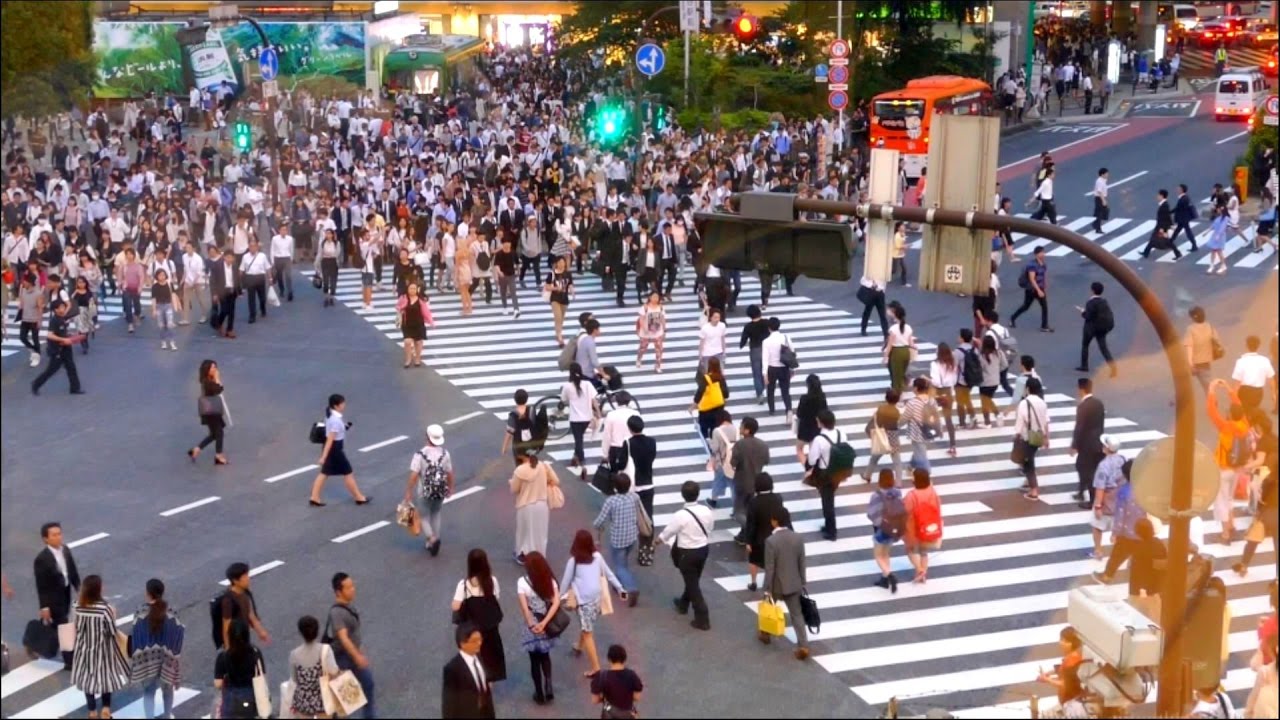
Amidst all of the burgeoning markets in Asia, Japan stands out for numerous reasons: having a stable economy, consumers that have the thirst for specific types of products, and a strong desire for authentic labels. However, many challenges abound for businesses that lack experience in Japan, or in Asia as a whole. Businesses may have a difficult time penetrating the market and consumer culture since Japanese consumers are known to be very selective and require both high quality and excellent customer service.
In trying to break into the Japanese market, there is one search engine that you should definitely consider for advertising: Yahoo! Japan.
Info Cubic Japan is a certified Yahoo! JAPAN advertising partner. To learn about the most up-to-date trends, or to see the full scope of our Yahoo! Ads service, click here to discover the path to success, or contact us directly!
Why Advertise on Yahoo! Japan?
As of 2024, Yahoo! Japan continues to control roughly 10% of the search engine market share in Japan. Failing to grasp and use Yahoo! Japan may mean missing out on at least a tenth of the market opportunities.
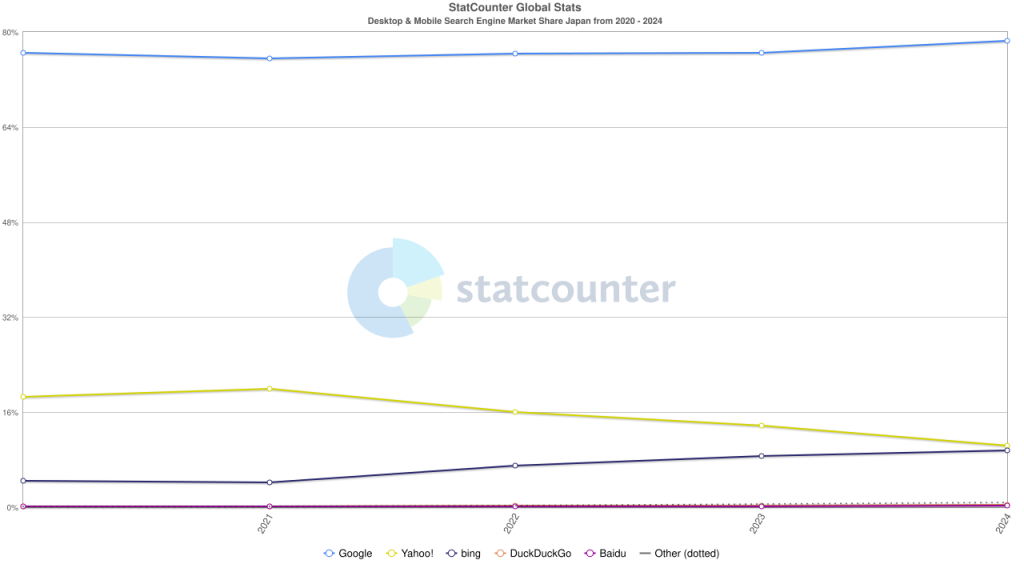
Source: https://gs.statcounter.com/search-engine-market-share/all/japan/#yearly-2015-2020
Established in 1996, Yahoo! Japan started only a year after Yahoo! was established in the United States. Through the innovation and development of hardware products, the company expanded with a noteworthy increase in the number of internet users within its early years because of the default browser settings on mobile devices.
However, Yahoo! Japan’s popularity did not last long, as many competitors began to see opportunities in the Japanese market.
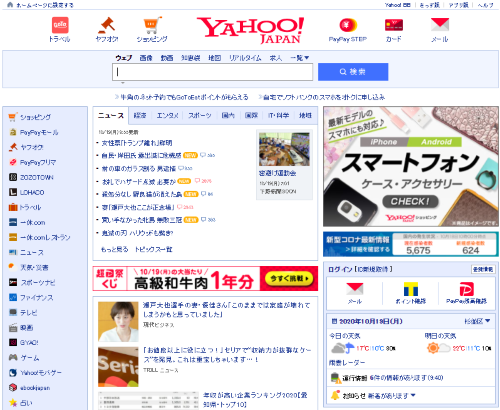
Since the arrival of Google Japan in 2000, the search engine has greatly impacted the internet. With its simple design yet advanced algorithm, Google has become the number one search engine in the world. Instead of being in direct competition with Google’s advanced technology, Yahoo! Japan decided to implement Google algorithms in 2010 on its own search functionality, which enables users to gain more effective organic results.
Taking this approach to Google’s growing dominance has allowed Yahoo! Japan to remain culturally relevant. Another contributor to Yahoo! Japan’s longevity is its identity as a one-stop site for eCommerce, communication and more. Think of it as a spiritual ancestor to the social media juggernaut platform LINE.
Because of its position as a portal site, Yahoo! Japan actually outnumbers Google mightily in total users, so its dwindling search share can be a little deceiving. For this reason, advertising through Yahoo! Japan still makes a lot of sense.
Yahoo! Japan Ads Features
The Yahoo! JAPAN search engine results page (SERP) layout will feel mostly familiar to regular Google users. However, there are some unique features that help it stand out, and may make it more attractive to advertisers.
SERP Structure and How Ads Appear
While Google provides the organic search results to Yahoo! Japan, the search results pages may seem a bit different depending on the search queries because Yahoo! Japan often adds their own unique content. That unique content provides more ways for businesses to find various opportunities for visibility in the search results.
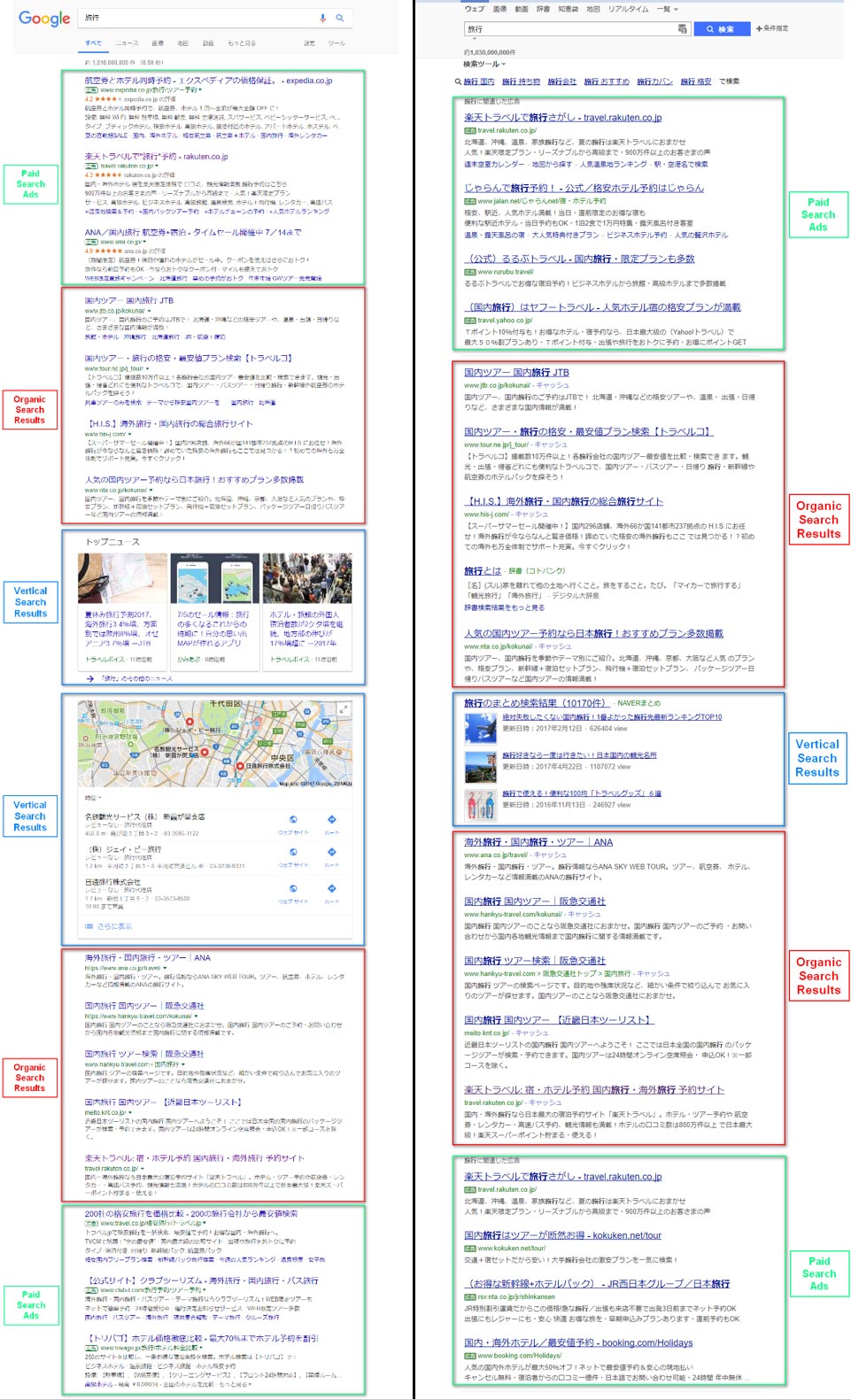
There are 10 or less universal organic results displayed per page on both Google and Yahoo! Japan. This is done to improve user experience by making a landing page’s loading speed as fast as possible.
The above screenshot displays the SERP structure and design of both Google and Yahoo! Japan. The section in the red box includes the organic search results that have related or the same rankings and the section in the blue box shows the variances in vertical search results.
SERP Snippets
The basic SERPs are usually shown with a title tag in blue, landing page in green and a meta description in a simple format to provide information about the landing pages.

The SERP snippet features of Google and Yahoo! Japan are identical. The search query keyword is in bold to specify the significance of the content on the page.
Sitelinks
Sitelinks are an essential feature to increase traffic and conversions on a website. It gives users a more effective experience by directing them through a shorter conversion funnel.
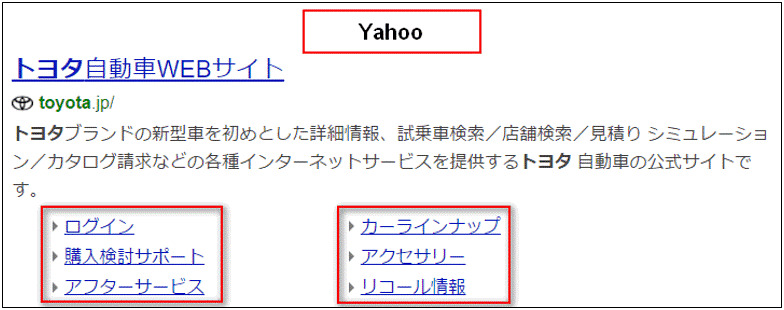
With the total area that sitelinks cover on the search results, they can also improve brand awareness and click-through rate (CTR). In the case of Yahoo! Japan, it only generates the title of the page for its sitelinks.
How to Start Advertising Effectively on Yahoo! Japan
Before setting up an advertising campaign, businesses will need to set up an account with Yahoo! Japan in order to run the campaign, as Yahoo! Japan is a separate entity from Yahoo.com
With that understanding
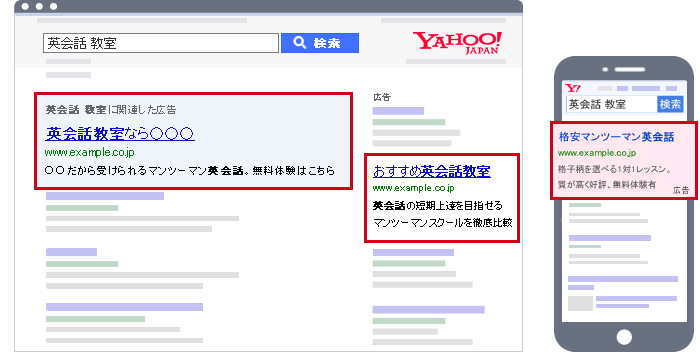
In November 2019, Yahoo! Japan renewed its Promotional ad products into Yahoo! Japan Ads, making their marketing services accessible on a new user-friendly platform to maximize advertising performance. Furthermore, Yahoo! Japan’s ads have simplified their ads into Search Ads and Display Ads.
Also called Pay Per Click (PPC) ads, these ads trigger the user’s action, and are comprised of two types: Search ads and Display ads.

Search Ads
These are text-based ads that are displayed to the users who search for keywords that are relevant to the ads. Advertisers can choose two ad distribution methods: All Ad Distribution and Search. The latter will only display ads on Yahoo! Japan’s search engine result pages while All Ad Distribution displays ads on both Yahoo! Japan and distribution partner sites.
Display Ads
Display Ads are delivered to users who constantly search for related terms. These ads utilize various formats such as images and videos on Yahoo! Japan’s homepage, Yahoo! JAPAN News, and more. As stated before, Yahoo! Japan still outshines Google in usage despite giving up a substantial market share for search. Subsequently, display ads are the highly recommended format for utilizing Yahoo! JAPAN Ads.
Yahoo! Japan Advertising Demographics
Being an all-in-one platform opens Yahoo! Japan to wide range of users – over 80 million monthly, to be exact. Men and women of all ages use Yahoo! Japan for shopping, checking emails, and the platform even offers mobile applications. B2C brands will likely benefit most from advertising on Yahoo! Japan. Companies in the automotive, tech and retail industries would be well-served to consider advertising on Yahoo! Japan.
Key Takeaways
Japan has one of the largest economies in the world. However, due to several differences in consumer culture, it can be difficult for businesses to penetrate the Japanese market. One of these differences is in the use of search engines since 10% of Japan’s search engine market is controlled by Yahoo! Japan. But the platform is so much more than search. To recap:
- Yahoo! Japan is not just a search engine, but also a one-stop portal site that draws millions of users and billions of page views monthly
- Still viable as a search engine, advertisers can gain traction from search ads, while receiving added benefit from investing in display advertising
- Demographics for Yahoo! Japan users are far-reaching, making your target audience easy to find
- Advertising formats and placements rival the quality of Google advertising
To get started with your Yahoo! Japan campaign, contact us at Info Cubic Japan today. We are an official Yahoo! Japan agency, and we’re ready to assist with any questions you may have.
